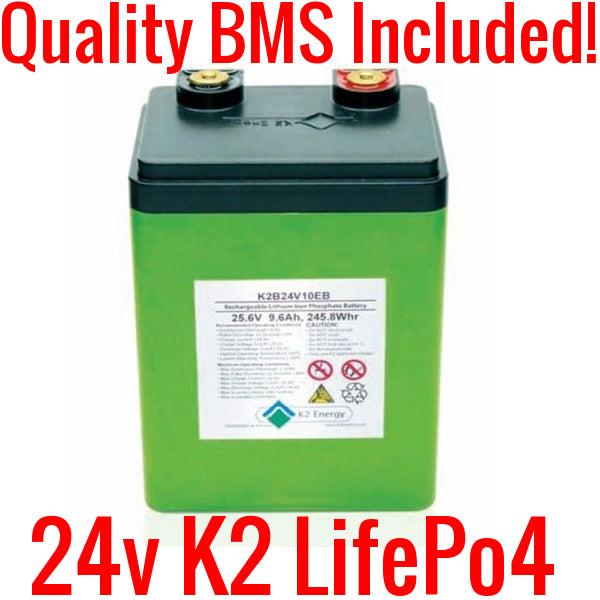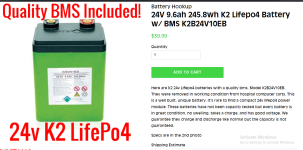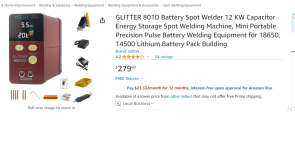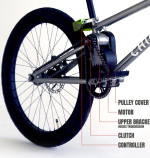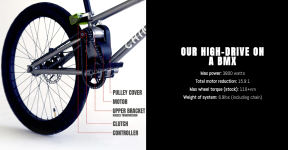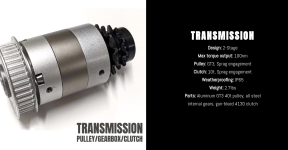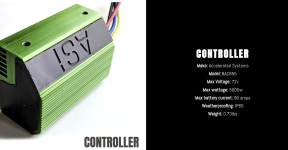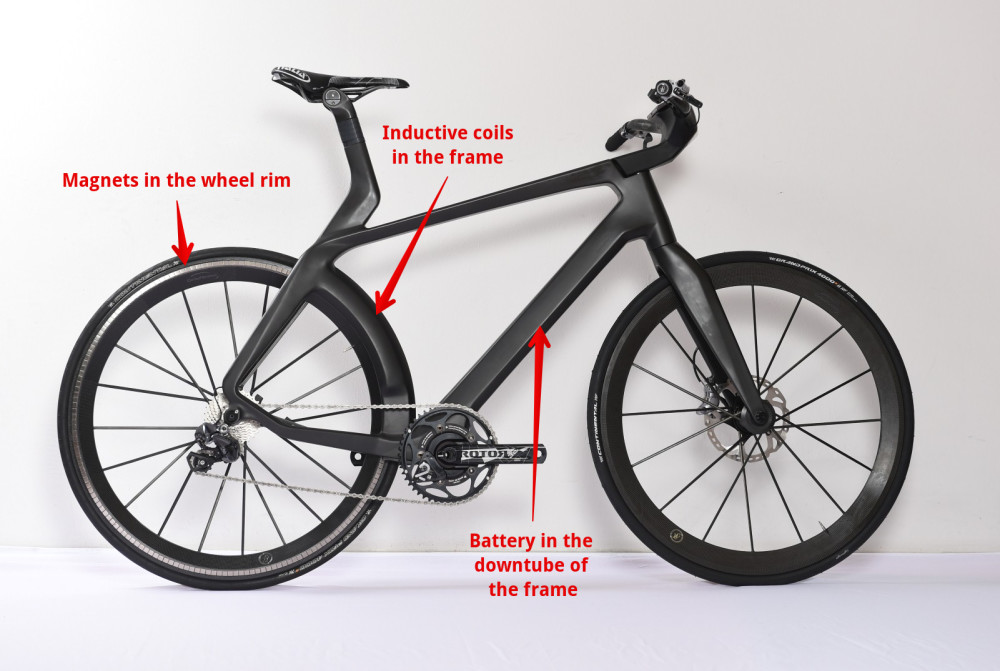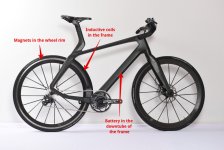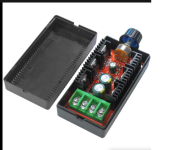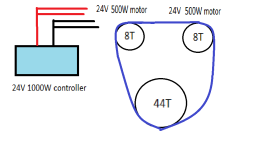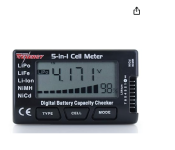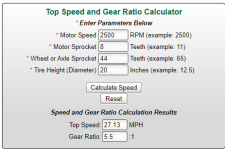
I plan on running dual 500W motors so will order the current limiting 45 amp controller from electric scooter parts but due to $$$ issues this month I might have to wait until next month for the controller.
If I use the controller I got now I can mount a multi meter to the handle bar to monitor voltage. The cells are 18 Ah Lishen LTO. They should have no issues doing up to 8 miles on a full charge. However I ran into a problem.
The 10S 5 amp active LTO balancer I got does not seem to be working. Unlike the 1.2 amp balancers there is no LED lights to show it is working. The fuses I bought for the balance wires are 10 amp but the holders and wires are way too big. I hooked them up anyway. It was to protect the balance board from short circuit just in case a cell does reverse polarity.
I had a fire awhile back with old 8 Ah Headway cells. It caught a 12S 1.2 amp balance board on fire so I fuse protect all balance wires now. I was hoping for 18 gauge wires to mini fuse holders with wires but got 10 gauge instead with large fuse holders.
I hooked up the balancer and checked the cells the next day after charging and had cells >3V and other cells around 2.4V. Fully charged each cell should be around 3.65V for LTO. This is a problem. I contacted the seller and requested a replacement. Even if that happens it takes at least a month for shipping.
My solution is to hook up balance wires and externally balance with my 6S balancers. To do that I will need to balance half the pack with one balancer and the other 5 with another balancer. I have two 6S LTO packs that I did that with and they are all between 3.6 and 3.7V.
I really need to run 10S LTO as my old LIFEPO4 packs are on their way out as taking longer and longer to charge indication even lower capacity. It used to charge from 20% to 85 to 95% in about an hour. Now it takes about 2 to 3 hours to get it to around 80%.
Today I will check for self discharge on the LIFEPO4 and check to see if the LTO balancer has done anything balance wise compared to yesterday. Later I will hook up wires for external balancing. I got solder at Wall fart yesterday.
3: 52 PM.
I just checked both the LIFEPO4 batteries and the LTO pack.. Two out of three LIFE packs need balancing and the 10S LTO pack seems to be better. There is still cells at 2.4V but the highest is 2.7V now down from 3.2V 24 hours ago. My problem is I paid for a 5 amp active balancer. It should balance a pack quickly compared to a 1.2 amp balancer.
I hooked the 28V charger up to it. I just got it back today. My friend was using it as he was waiting on his proper 29.2V 8S LIFEPO4 charger. I had it as I has to solder alligator clips to it so he could use it as both chargers came with the 3 pin cable. I used the 29.2V charger before which might have contributed to the high cells > 3V.
I will measure voltage for each cell when the 28V charger fully charges the pack and see if there is any balancing going on. Like I said though a 5 amp balancer should balance way faster than a 2 amp charger. The pack should be perfectly balanced when it is fully charged. I wanted to upgrade to a 4 or 5 amp charger for charging out on the road.
The only reason I had a fire with the old 12S LIFEPO4 pack was because I ran it twice that day. A 8 mile round trip and actually did get a full charge on my 10 amp 43.6V charger. < 2 miles later I had the fire. It was because the 1.2 amp balancer was not able to keep up with the 10 amp charger. I should have waited until all the LED lights went out on the balancer and NOT run it when it was lit up like a Christmas tree.
Now this 5 amp balancer has no LED lights at all so have no way of knowing if the unit is working or not without testing each cell. I am not happy about that and need to solder the balance wires for external balancing as soon as it reaches a full charge and I test each cell again. If by some miracle they are all really close then I might not need to externally balance. That would be great but not getting my hopes up.
Thanks.
Skyler out.


